Juan Miguel ÁLVAREZ DEL OLMO belongs to the latest generation of classical guitar makers in downtown Madrid (Spain). Today in 2011, he still works in the shop established by his father, Juan ÁLVAREZ – GIL, in Calle San Pedro, not too far from the Prado Museum. FolkWorld had the chance to meet him and get some insight about Spanish classical and flamenco guitar making.
Juan Miguel ÁLVAREZ DEL OLMO (born 1960 in Madrid) is the son of Juan ÁLVAREZ – GIL (Madrid, 1932-2001) who started making guitars in 1946 with his brother Lorenzo ÁLVAREZ, who was a cabinet maker. Juan ÁLVAREZ – GIL improved his guitar construction technique with the mentoring of Marcelo BARBERO (1904 – 1955), who was one of the great Spanish guitar makers of the 20th century in Madrid, and a disciple of the famous Manuel RAMÍREZ. In 1952, Juan ÁLVAREZ – GIL established his workshop in Calle San Pedro, 7, where he developed the great qualities for guitar making as learned from his mentor.
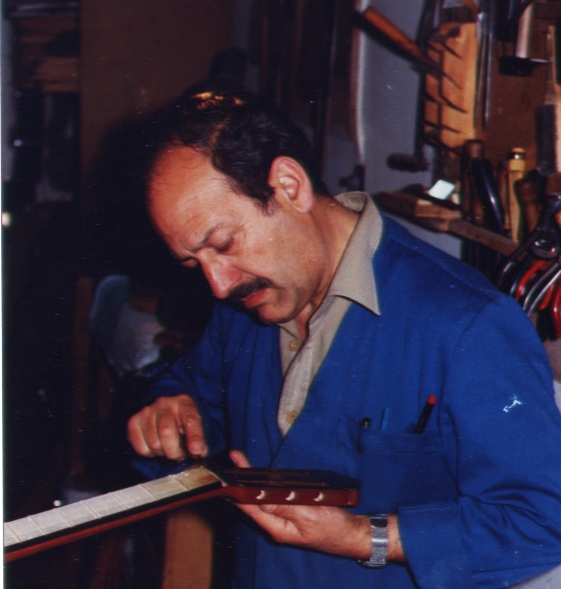
Although Juan died in 2001, his son Juan Miguel started working with him in 1977 and today he continues in the family business, building excellent hand-made guitars with all the skills learned from his father, and some of them ordered and built according to the specific requirements of customers coming from places as distant as Japan. We had the opportunity to meet Juan Miguel in his shop in a quiet street in old town Madrid, not far from calle Huertas and the Prado Museum. A small shop full of top class guitars and other string instruments, but most of all full of the rich history of Madrid’s traditional and classical guitar music in the latest centuries.
Pio FERNÁNDEZ: Which guitar players have been customers of the Álvarez guitar shop?
Juan Miguel ÁLVAREZ: Besides a large number of classical and flamenco musicians, I can also proudly mention guitarists such as the Cuban Compay SEGUNDO or even Eric CLAPTON, who played one of the guitars built by my father for the recording of ‘Tears in Heaven’, included in his ‘Unplugged’ record. That guitar was made in 1977, and it was sold in an auction in 2004 at Christie’s in New York reaching a price of $ 253,900, which still is a record for a classical style guitar (other famous electric guitars have reached higher prices).
When you say ‘classical guitar’, What do you exactly mean by that? Is there a difference between that and a Spanish guitar designed for Flamenco music, for instance?
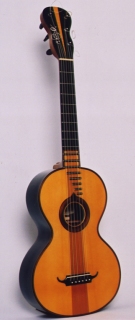
By ‘classical guitar’ I am referring to the modern acoustic guitar, the one developed in the latest century and that is used in classical music. The Spanish acoustic guitars can be divided in two categories: Classical and Flamenco. The acoustic hand-made guitars built in Spain incorporate some peculiarities that make their sound slightly different from those built in other places. And even the Spanish guitars made for Flamenco music show some differences with those others built also here for Classical music.
And what about the Spanish guitars built not in Madrid, but in Andalusia (Granada, Sevilla,...)?
There are some differences between the styles of Spanish guitars built in Madrid and in Andalusia. In my personal opinion, most of the guitars built in Madrid are very adequate for playing classical and flamenco music. Meanwhile, the sound of the guitars from Granada is probably better to play together with the voices of the Flamenco singers. But I also recognize that all this depends a lot on the ear and the musical taste of the listener.
Is there any kind of formal official school in Madrid for teaching the younger generations the construction techniques for these guitars?
Not really. The local tradition for the learning of top guitar making requires the person to dedicate 100% of the effort to work in the shop of an experienced guitar luthier or ‘guitarrero’. That allows him to progressively learn and repeatedly practice all the specific techniques required to make a great guitar. That process may take more than ten or fifteen years of working and learning on the job, but is the best way to firmly obtain all the knowledge required to make the finest instruments. There have been some attempts by Spanish government offices to create schools for Spanish guitar making, but they never achieved the level of success provided by the traditional learning while working with the professional ‘guitarreros’.
When has the local Spanish guitar making industry achieved its latest level of success?
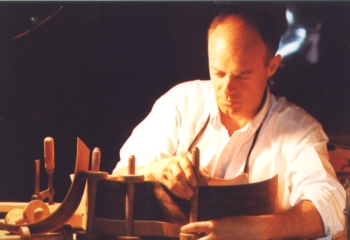
The latest big ramp-up in the popularity of the Spanish guitars, and specially those made in Madrid, took place from the 1960s until the 80s, or maybe even 90s. A key factor for the popularity and the prestige achieved by these instruments was the enormous talent of two Spanish ‘guitarristas’: Andrés SEGOVIA and Paco DE LUCIA. Until they played their guitars in classical music concerts and top flamenco and even jazz music concerts, these instruments were still considered almost ‘secondary’ when compared to pianos or violins.
In their respective musical fields: classical and flamenco, SEGOVIA (Narciso YEPES as well) and Paco DE LUCIA showed the brilliant possibilities that the guitar can offer. Until then, the guitar was considered an instrument valid for traditional and popular music but not much more. It is true that at least since the 19th century the guitar in Spain was considered a fine instrument and required a formal learning of its playing technique for classical music, but not to the point to think that a solo guitar player could fill an entire concert hall or a football stadium.
I imagine that top classical guitars made in other places (Portugal, France, Germany, Italy, USA, ...) would be also very competitive, before and after the time of SEGOVIA and DE LUCIA.
Of course. There have been European makers that have traditionally made excellent instruments aswell, and many times significantly more expensive. One of the challenges for the Spanish guitar industry was when in the 1960s in Japan they started to establish guitar making shops for top quality instruments. They learned and worked very hard, and they achieved instruments of great qualities and with high rates of production, but for whatever reasons not always with the sound characteristics of the top Spanish guitars. One of those excellent Japanese guitar luthiers was for example Masaru Kono from Tokio.
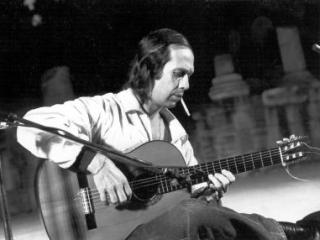 |
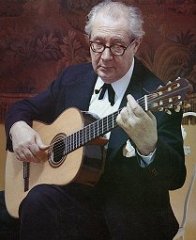 |
So, where are the differences between a high class guitar made in France, Germany, Spain, or any other place?
The quality of top class guitars made in one place or another can be just as good. The differences are in the peculiarities of their sound, and probably those are to a certain extent adapted to the characteristics of the local traditional music. For example, the incorporation of the guitar in the Irish traditional music is relatively recent, and they have probably adapted the sound of their local instruments to the needs of their musical rhythms. Meanwhile, the guitars in Spain have kept their traditional design while developing a distinctive maybe ‘warmer’ sound, probably more adequate for the Spanish classical and flamenco melodies played along the latest centuries.
Tell us a bit about the construction materials (the woods) and the guitar structure configuration!
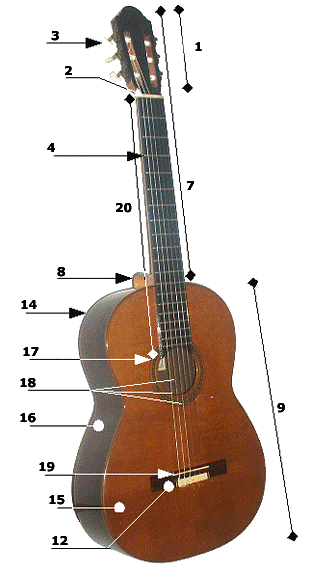
After years of experimentation, the best wood species for guitar making are very well identified by most luthiers. These normally are:
Then for example in your case: How do you define the particular geometry for the design of your guitars to get the quality instruments that you are looking for?
The guitar geometry, the external dimensions, are not really the key for the instruments that I want to achieve. Like all luthiers, I play with other construction factors, with the final target of getting the kind of sound that I really want. For my guitars I look for the right balance between the bass and the treble notes, the right tuning, maybe at the price of a bit less sound volume, which is the other most important aspect. I also look for a neck design that provides comfort for the left hand to move along the fingerboard. My father liked to keep the Álvarez guitars with a neck design significantly wide and thick, and that did not mean any trouble for guitarists such as Andrés SEGOVIA, who had huge hands. When my father died, I started to incorporate some modifications in the guitars and the reduction of the neck sectional perimeter was one of them.
The fact is that each of the makers in Madrid has incorporated a certain specific quality in the acoustics of his guitars. All the local makers have found a certain distinctive quality in the acoustics of their guitars. But at the end, all of us have more or less converged in a certain common style of sound that is characteristic of the guitars from the Madrid school.
So if the external dimensions and shapes are not so determinant for the guitar sound, I guess that there could be aspects such as the thickness of the soundboard. Do you use different thicknesses depending on the zone of the soundboard?
That is correct. The guitar top and its different thicknesses over the whole surface define the majority of the acoustic qualities of the instrument, although the other key aspect for the soundboard are the braces that are glued on the inner (back) side of that panel. There are different arrangements of tone braces, and their configuration and the braces shapes and sizes shall also vary depending if the wood is spruce or cedar. These are really key design factors, but it is also true that keeping almost-identical woods and equal geometries in the structure of different guitars, does not guarantee identical sound qualities in all of them. Sometimes you achieve guitars whose acoustic qualities are not as good as you expected, but other times you obtain guitars whose sound is surprisingly above your initial expectations .

Then, once all the guitar parts are assembled and glued together, do you still have any possibility to tune that variability in the sound qualities?
Once the guitar is fully assembled we do not have any effective device for correcting the sound qualities. This is different from the violins, where you can still play with the positioning of the sound post inside the body of the instrument. We can make minor tweaks for example applying certain tension on the soundboard, by means of the strings, etc.
So, how do you manage that random variability in the final sound quality of the guitars?
The fact is that if the guitar is built with high professional care in the control of the materials selection and manufacturing processes of all parts, in very few cases you need to discard an instrument. My father used to say that if after a perfect construction process, you found guitars with some differences in the sound qualities, at the end it was a factor to be discriminated by the personality of the guitar players who tried them in our shop. Experience has demonstrated that in most cases, different guitarists preferred different sound qualities. And at the end all our guitars found the perfect match with a guitarist who said: “This was exactly the kind of special sound that I was looking for!”.
According to what you said earlier, the variability in the external geometries was not so important for the final sound qualities. But I imagine that for example, all Spanish guitars are built within quite a similar pattern.
Each guitar maker has established his ‘template’ of reference for the planform of the soundboard. But all of them stay very close to the designs that were developed a century ago. Today’s guitars dimensional proportions and pattern of reference in Spain was established at the end of the 19th century by Antonio DE TORRES – JURADO, in Andalusia, as an evolution from the previous ‘Romatic guitar’ shape.
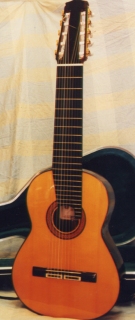
How do you procure and select the woods to be used in your guitars? Do you have specific suppliers that you work with?
The suppliers for the fine woods can be diverse. There could have been a couple of large Spanish distributors, or sometimes people that came directly to our shop with a small truck. The fact is that we have kept in our storage area all the selected wood that has arrived to us along decades, but we only make use of it after 30 years of storage. For example today in 2011, I am using wood that my father bought when I started working with him in the late 1970s.
And what about the glues that you use for guitar making: Is it some kind of special cabinet makers´ commercial glue, or do you eventually stick to traditional natural products such as rabbit-skin glue?
I use some special kinds of synthetic carpenter`s glue. They are the best for their hardness and elasticity. They come from a specific manufacturer in Germany, but I incorporate some modifications to the product. The old natural glues were the best that could be achieved centuries ago. But today we have found in the instruments built in those days that their bonds have degraded by crystallization, which makes them very brittle. They have one advantage though, that they can be easily de-bonded by applying water and heat. Then for example the old violins can be easily disassembled, and then re-assembled again with new glues.
Which kind of protective finishes do you use on your guitars? Lacquers, synthetic varnishes,....
There are two basic kinds of wood finishes on guitar making: polyurethane varnish, and the traditional shellac resin lacquer. Although it may sound unpopular to the ears of the traditional guitar purists, my preference is to use the polyurethane varnish. I believe that it provides a ‘sweeter’ sound and it lasts longer. The guitars finished with shellac look really beautiful, but that kind of finish is less durable and for my taste the sound of their less ‘silenced’ wood surfaces may sound too “bitter”. I procure my synthetic varnishes from two or three different Spanish suppliers specialised in products for luthiers.
If you stop by in Madrid, you can visit Juan ÁLVAREZ’s guitar shop in:
Photo Credits:
(1) Juan ÁLVAREZ-GIL (Madrid, 1932-2001);
(2) Romantic Guitar, Maker: Juan ÁLVAREZ, Madrid, 20th Century;
(3) Juan Miguel ÁLVAREZ DEL OLMO;
(4) Paco DE LUCÍA (Born in Cádiz 1947);
(5) Andrés SEGOVIA (Jaén 1893 – Madrid 1987);
(6) GUITAR PARTS;
(7) Classical Guitar, Maker: Juan ÁLVAREZ, Madrid, 20th Century;
(8) 10-String Classical Guitar, Maker: Juan ÁLVAREZ, Madrid, 20th Century.